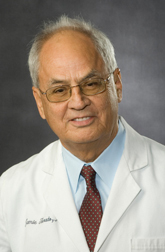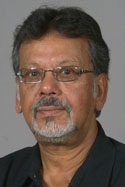Day 1 :
Keynote Forum
Wassil Nowicky
Ukranian Anticancer Institute, Austria
Keynote: Selective and immunomodulating properties of the anticancer proton preparation on basis of greater celandine alkaloids NSC631570
Time : 09:35-10:10

Biography:
Abstract:
Keynote Forum
Jan Jacques Michiels
Erasmus University Medical Center, Netherlands
Keynote: Clinical, Laboratory, Molecular and Pathological (CLMP) Euro-Asian classification and treatment options of prefibrotic JAK2, CALR and MPL mutated myeloproliferative Neoplasm
Time : 10:10-10:45

Biography:
Abstract:
Keynote Forum
Jerome Check
Cooper Medical School of Rowan University, USA
Keynote: Progesterone receptor modulators provide significant palliation for a variety of advanced cancers including tumors devoid of the classic nuclear progesterone receptor
Time : 11:00-11:35

Biography:
Abstract:
Keynote Forum
Junliang Liu
University of Manitoba, Canada
Keynote: Explore the ways to manage brain metastases for better outcome
Time : 11:35-12:10

Biography:
Abstract:
- Cancer Therapies | Oncology | Radiation Oncology | Cancer Diagnostics Types | Cancer Innovations | Approaches in Cancer Therapy
Location: Diplomat

Chair
Jaime Tisnado
Virginia Commonwealth University, USA

Co-Chair
Adhip P N Majumdar
Wayne State University, USA
Session Introduction
Jaime Tisnado
Virginia Commonwealth University, USA
Title: Carotid blow out syndrome: Interventional radiologic management

Biography:
Abstract:
Adhip P N Majumdar
Wayne State University, USA
Title: Gut microbiome regulation of cancer stem cells and colon carcinogenesis

Biography:
Abstract:
Junliang Liu
University of Manitoba, Canada
Title: Brain metastases: Post-whole brain radiotherapy systemic treatment increases survival

Biography:
Abstract:

Biography:
Abstract:
Oleg V. Gerasimenko
Cardiff University, UK
Title: Potential protection from the side effects of antileukemic drug asparaginase

Biography:
Abstract:
Omnia Abd El-Fattah
Tanta University Hospital, Egypt
Title: Quality-of-life scores in locally advanced laryngeal carcinoma patients as a predictive value and impact on survival

